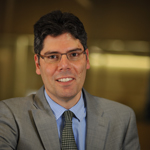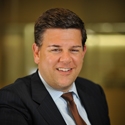Serving SMEs in a Tough Neighborhood: Part two of our Q&A with the CEO and Managing Director of the Middle East Investment Initiative
The Middle East Investment Initiative (MEII) is a U.S.-based non-profit whose mission is to develop innovative finance tools for SMEs in the Middle East and North Africa. Its finance and technical assistance programs help stimulate sustainable economic growth, whether through SME credit, loan guarantees and insurance, or affordable housing loans and banking for the poor, to boost the economies of countries throughout the Middle East and North Africa.
NextBillion Financial Innovation spoke with Jim Pickup, President and CEO of the MEII, and Rami Khoury, its Managing Director, about the challenges of working in this volatile region. The second part of our Q&A is below. (You can read the first part here.)
James Militzer: How do you handle the challenges of developing products in countries with political instability – do you have any mechanisms that help you respond to unexpected new circumstances that are beyond your control?
 Rami Khoury (pictured left): Unlike many others in this space, we avoid simply responding to requests for proposals that address topics that might not be completely applicable in a local context. Our goal is to design very unique financial products based on local needs in each country, and based on these assessments we design the program or the intervention that we think makes the most sense. Then we go out and identify donors willing to take a risk on something new and innovative. So it’s really picking the tougher and harder road. I think that’s one of the things that distinguishes us. And yes, it is a tough region. But our thinking is that if we make things happen in a place like Palestine with all its challenges, then we should be able to export that knowledge and capacity to other countries in the region. It is often quite frustrating, but the rewards are worth it when we’re able to get things done.
Rami Khoury (pictured left): Unlike many others in this space, we avoid simply responding to requests for proposals that address topics that might not be completely applicable in a local context. Our goal is to design very unique financial products based on local needs in each country, and based on these assessments we design the program or the intervention that we think makes the most sense. Then we go out and identify donors willing to take a risk on something new and innovative. So it’s really picking the tougher and harder road. I think that’s one of the things that distinguishes us. And yes, it is a tough region. But our thinking is that if we make things happen in a place like Palestine with all its challenges, then we should be able to export that knowledge and capacity to other countries in the region. It is often quite frustrating, but the rewards are worth it when we’re able to get things done.
 Jim Pickup (pictured left): And it’s also important that we as an organization really look to minimize our headquarters presence here in Washington, DC. In order to operate in the MENA region, having a local presence with local staff who are embedded in the community is key. We have only three staff in Washington, D.C., to maximize our people and our resources in the region. We have 14 local staff in Ramallah, six local staff in Tunisia, and we have relationships and partners elsewhere in the region. And because of that, because they’re part of the local community, they have a certain resiliency – as these obstacles are part of their daily life and they’re driven by an entrepreneurial desire to improve their own region.
Jim Pickup (pictured left): And it’s also important that we as an organization really look to minimize our headquarters presence here in Washington, DC. In order to operate in the MENA region, having a local presence with local staff who are embedded in the community is key. We have only three staff in Washington, D.C., to maximize our people and our resources in the region. We have 14 local staff in Ramallah, six local staff in Tunisia, and we have relationships and partners elsewhere in the region. And because of that, because they’re part of the local community, they have a certain resiliency – as these obstacles are part of their daily life and they’re driven by an entrepreneurial desire to improve their own region.
JM: Talk about your work with female-owned businesses. How important are they to the work you do, and how do you deal with the cultural challenges of working with women in places where they may not be encouraged to be business people?
JP: Reaching women-owned businesses has always been a substantial goal of ours. Our own staff is over 50 percent women. Former Secretary of State Madeline Albright, former USAID Administrator Henrietta Fore and former Secretary of Labor Ann Korologos are on our board, and this has been a significant priority for them as well. Obviously, this region is a challenge, and we’ve done some unique things in order to reach directly to women-owned SMEs. A lot of businesses in Palestine are run by women, but the business is not necessarily in their name. The business may be in the husband’s, brother’s or family’s name. So finding actual women-owned businesses has required us to look deeper, and one area is through smaller loans. Traditionally, microcredit in Palestine doesn’t have the long history it has elsewhere in the region, but there are some MFIs there that work specifically with women. These are formal businesses and their financing needs are larger than the typical microloan – usually between $3,000 and $10,000 USD. In order to support this activity, we have enabled private lending to MFI’s that are working with women-owned businesses.
RK: In addition, to further support women businesses, we are launching a new product, a web-based platform called Finpoint. It’s really a matchmaking platform, but it connects businesses, in particular “missing middle” businesses, with bankers. Essentially, it would allow a business that needs funding to be able to reach banks online, rather than having to close up shop and physically go from one bank to another, and more than likely being rejected on the spot because they lack collateral or sufficient documents. Finpoint will allow businesses to post an anonymous funding request on this platform. The lenders then, depending on their filtering criteria, will get notified of a potential client on that platform that meets certain criteria that is looking for financing. The bank then contacts this borrower via the platform and says, “I saw your post and I’d be interested to learn more about it.” Only at that point does that business have the option to give the bank full access, and anonymity is gone, or to reject that bank for whatever reason. And for female-owned businesses themselves, this could be a very nice, safe way for female entrepreneurs to approach the banks anonymously, only then entertaining serious banks for requests or inquiries. We’re testing it in Palestine, but there are many other countries in the MENA region where this can be applied and needed, particularly in countries where the laws won’t allow females to independently open up a bank account. We’ll be launching it at the end of this year in Palestine with the idea of later launching it in other countries across MENA.
JM: Does Sharia law have any impact on the work you do?
RK: It does, but again it differs widely from country to country. In many countries in the Gulf Cooperation Council, Sharia compliant financial instruments are critical, and must be incorporated into the financial product. In other places for example, like Lebanon, Tunisia, Palestine and Jordan, it’s not as important and it’s not as dominant. So to give you an idea, with Palestine, there are roughly 18 commercial banks operating in the Palestinian Territories, two of which are Islamic, and between the two they probably account for roughly around 10-12 percent of the market. So there is obviously a market niche, and Islamic finance is growing at double-digit rates throughout the region, but we haven’t run into obstacles so far.
JM: What are your plans for the future?
JP: The main thing is our regional Direct Finance Facility, which we think is very important because while we’ve had success through our loan guarantee facility model, working through local banks can only have so much impact. Our goal is to expand financial products specifically tailored to the “missing middle,” or small and medium sized businesses that need $100,000-1,000,000 in capital to grow. This category includes most of the businesses in the Middle East. Over 85-90 percent of the businesses fall into this category – they are too big for traditional microcredit or government subsidies, and they’re too small for either bank lending or equity investments. So we’re trying to solve this equation, and it’s not as simple as just putting together an equity fund and investing in them, because there are a number of both legal and logistical challenges. It costs a lot of money to do the due diligence on these businesses, and there’s no real guarantee with an equity investment that you’ll be able to get your money back at the end. Lending is a challenge too, because what these business often need isn’t just a loan, but it is well-structured lending – lending that allows them to put the capital to use, and potentially have a large grace period so they can actually start making money and paying back the loan. So we’re experimenting with some innovative ways to offer new products for these businesses and to do it on a regional basis, not just our traditional hubs of Tunisia or Palestine.
RK: Looking at the banking system in these countries and across MENA, and looking at all the lack of credit to small and medium sized enterprises, we came to the conclusion that working through the banking system is one way of reaching these businesses, but it’s definitely not the only way and arguably not the most effective way. Because at the end of the day, banks will continue to be banks. They are profit-making institutions that pursue the path of least resistance. So it makes much more sense for a bank to lend to the government, to buy treasury bonds. They are relatively safe and they give a steady return. It makes more sense for banks to lend to large corporations, because the large corporation not only has all the financial statements and information and sophistication to deal with the bankers, they also have the capacity to pay and provide collateral. So when it comes to the missing middle, these small business that a) lack adequate financial statements, b) don’t have collateral, and c) are unsophisticated, it’s very challenging to convince the banks that there is a profitable and lower risk market here. So that was basically the motivation for us to say, let’s do it ourselves. Because 1) we have the risk appetite, 2) we can offer flexible products that the banks can’t offer because of the regulatory restrictions on their part, and 3) we have the know-how to reach these small businesses. So hopefully we’ll be proven right in the coming years.
James Militzer is the editor of NextBillion Financial Innovation.
- Categories
- Uncategorized
